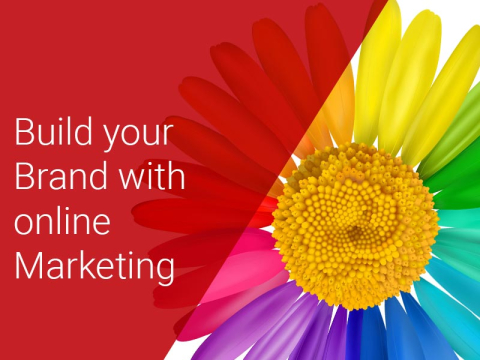FREE Search Engine Optimisation (SEO)
Tips for your website...
You may believe that optimising your
website’s compatibility with online search engines would be a highly
expensive and technical process... However that does not have to be the
case. So to achieve greater search engine results, to increase the
amount of traffic being directed to your website, and ultimately to
maximise the online presence of your business without spending a penny,
be sure to follow the simple SEO guide below:
SEO tip #1 – Page Titles
Page
titles have a very important impact upon SEO, and are something which
can create a huge difference to the online presence of your website,
incredibly simply. A common mistake is to use the same page title for
every page site-wide. This greatly limits the likelihood of your web
pages being found by the search engine from the keywords which the user
has searched. So to increase the potential for search engines to find
one of your web pages, edit your page titles individually to make them
unique and relevant to the content of each web page. With a greater
variety of keywords used within your page titles, your website will have
far greater chances of being highly and widely ranked within search
engine results.
SEO tip #2 – Headers and sub-headers
Headers
are required at the top of every web page, and sub-headers are useful
to break up the text on each page - helping users to find specifically
what they are looking for, promptly. However in addition to these basic
functions of headers and sub-headers, search engines use them in a more
technical manner to recognise highly relevant search engine results. The
key point to understand here is that search engines will only pay
attention to headers which are as set as “H1” and sub-headers which are
set as “H2”. These H1s and H2s will have a standard appearance, font and
size; however they are noted by search engines as key pieces of
information. Therefore if a user searches a phrase which is also used as
a H1 or H2 within your website, it causes great potential for your web
page to be highly ranked within the search results.
SEO tip #3 – Content
Content
is king. While broader content used within your web pages is likely to
draw more traffic to your website from a greater variety of keywords
searched, it will not be beneficial to you or your business if you have a
high bounce rate. Bounce rate refers to the amount of single-page
visitors to your website who exit your site from the landing page
because your website is not in fact relevant to their search. SEO is
only worthy if your website visitors are going to be happy visitors who
do not feel like you have wasted their time; so be sure that the content
on you web pages is significant and relevant to your purpose. Don’t go
off on a tangent, it will only confuse search engines and your visitors
alike.
SEO tip #4 – Alt tags
When uploading images to
your site, always use Alt tags to describe the picture in brief key
words. Alt tags offer alternative text to images which can prove to be
highly useful in certain circumstances; for example to provide further
detail of an image in instances where images cannot be displayed (for
example to people who use text-only browsers), to enhance user
experience for those with disabilities who are using a screen reader,
and to describe the link in hyperlinked images to give an insight into
the link destination before a user redirects.
SEO tip #5 – Internal Linking
Search
engines will pay more attention to linked text within your website,
therefore long tail linking is another key SEO tip. Selecting longer
phrases within your web content and linking them to other relevant pages
within your website will result in those web pages being more highly
ranked by search engines. Don’t only link to and from your homepage;
always include an internal link when mentioning content on a web page
which is relevant to the content on another of your web pages. To ensure
that you are choosing to link effective phrases which are commonly
searched for, the Google keyword tool is highly recommended. By using
the Google keyword tool you can find out exactly what web users are
searching for at which rates in order to make informed decisions about
which web content to link.
SEO #6 – Back Links
Having
back links on your website is another key SEO tip. A back link is a link
on an external website which links directly back to your website via
relevant content. Your website will then in turn inherit some of the
other website’s ranking potential. This can be highly valuable to your
website, particularly so if the other website is one of strong
authority. This will make your website appear higher in search engine
results.
SEO tip #7 – Accurate Copy
For users to rate
your website - and in turn your business - with high credibility, it is
important that the copy on your website reads fluently with grammatical
accuracy. If every visitor to your website is distracted by your poor
spelling and confusing sentence structures then they will not be able to
see past this which would be extremely detrimental to your business. If
your website visitors cannot appreciate the service which you are
offering because you are struggling to explain your services accurately
and fluently, then all of your SEO efforts will be wasted. If content
writing is not one of your personal strong points then hiring a
copywriter is a must.
SEO tip #8 – Meta Tags
A Meta tag
is a line of HTML coding which contains Metadata about a webpage. It is
essentially a page description which Google will present as a mini
‘advert’ for your website on the search engine results page. Make sure
you create a different Meta tag description for each page of your
website if your CMS allows this. Using Meta tags will increase your
click through rate and in turn lead to higher conversion. Note: Search
engines no longer read Meta keyword tags so you can leave this blank.
SEO tip #9 – Videos
Google
has recently expressed a huge love for videos, presenting videos
relevant to the search term towards the top of the search engine results
on page one, sometimes pushing highly relevant websites which are
lacking in videos on to the second page. Videos will make your website
more accessible, and give users variety and flair – after all, who is
going to read 1,000 words about your business when they can watch and
listen and understand everything your business has to offer in 30
seconds of simple video?!
SEO tip #10 – Social Networking Buttons
In
this age of social media, online networking websites like Facebook and
Twitter can act as fantastic tools for marketing your business on the
web. Adding a Facebook ‘like’ button, and a Twitter ‘follow’ button to
your website is a great way to get the word spread about your business.
If social media users see that their best friend has ‘liked’ or
‘followed’ your business then they themselves are likely to take a look
and follow suit. This snowball effect will boost the online presence of
your business rapidly - and the more social networking button clicks you
get on your website, the more Google will ‘like’ your website in turn!






